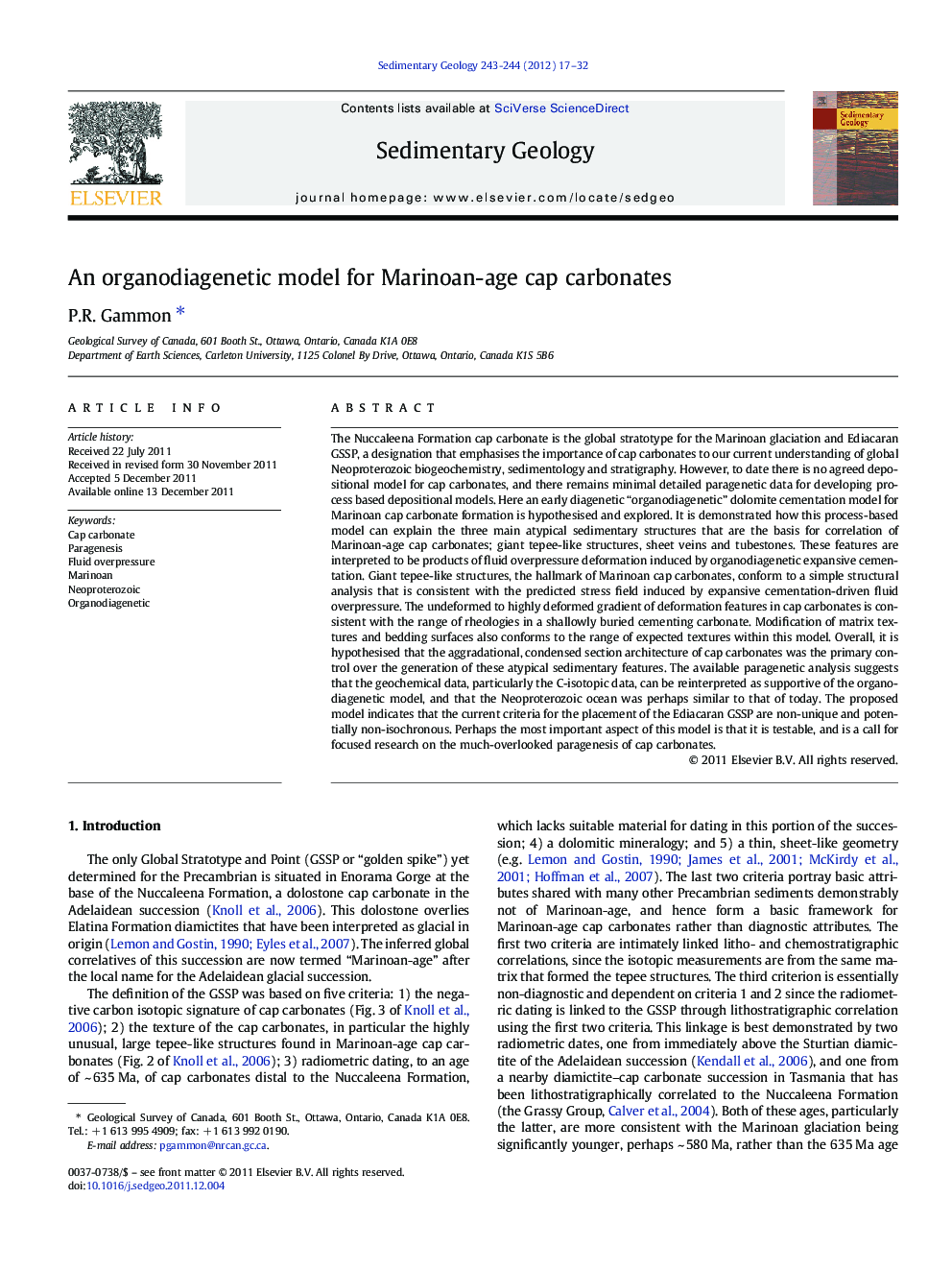| کد مقاله | کد نشریه | سال انتشار | مقاله انگلیسی | نسخه تمام متن |
|---|---|---|---|---|
| 4689911 | 1636099 | 2012 | 16 صفحه PDF | دانلود رایگان |

The Nuccaleena Formation cap carbonate is the global stratotype for the Marinoan glaciation and Ediacaran GSSP, a designation that emphasises the importance of cap carbonates to our current understanding of global Neoproterozoic biogeochemistry, sedimentology and stratigraphy. However, to date there is no agreed depositional model for cap carbonates, and there remains minimal detailed paragenetic data for developing process based depositional models. Here an early diagenetic “organodiagenetic” dolomite cementation model for Marinoan cap carbonate formation is hypothesised and explored. It is demonstrated how this process-based model can explain the three main atypical sedimentary structures that are the basis for correlation of Marinoan-age cap carbonates; giant tepee-like structures, sheet veins and tubestones. These features are interpreted to be products of fluid overpressure deformation induced by organodiagenetic expansive cementation. Giant tepee-like structures, the hallmark of Marinoan cap carbonates, conform to a simple structural analysis that is consistent with the predicted stress field induced by expansive cementation-driven fluid overpressure. The undeformed to highly deformed gradient of deformation features in cap carbonates is consistent with the range of rheologies in a shallowly buried cementing carbonate. Modification of matrix textures and bedding surfaces also conforms to the range of expected textures within this model. Overall, it is hypothesised that the aggradational, condensed section architecture of cap carbonates was the primary control over the generation of these atypical sedimentary features. The available paragenetic analysis suggests that the geochemical data, particularly the C-isotopic data, can be reinterpreted as supportive of the organodiagenetic model, and that the Neoproterozoic ocean was perhaps similar to that of today. The proposed model indicates that the current criteria for the placement of the Ediacaran GSSP are non-unique and potentially non-isochronous. Perhaps the most important aspect of this model is that it is testable, and is a call for focused research on the much-overlooked paragenesis of cap carbonates.
Journal: Sedimentary Geology - Volumes 243–244, 1 January 2012, Pages 17–32